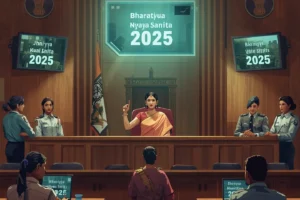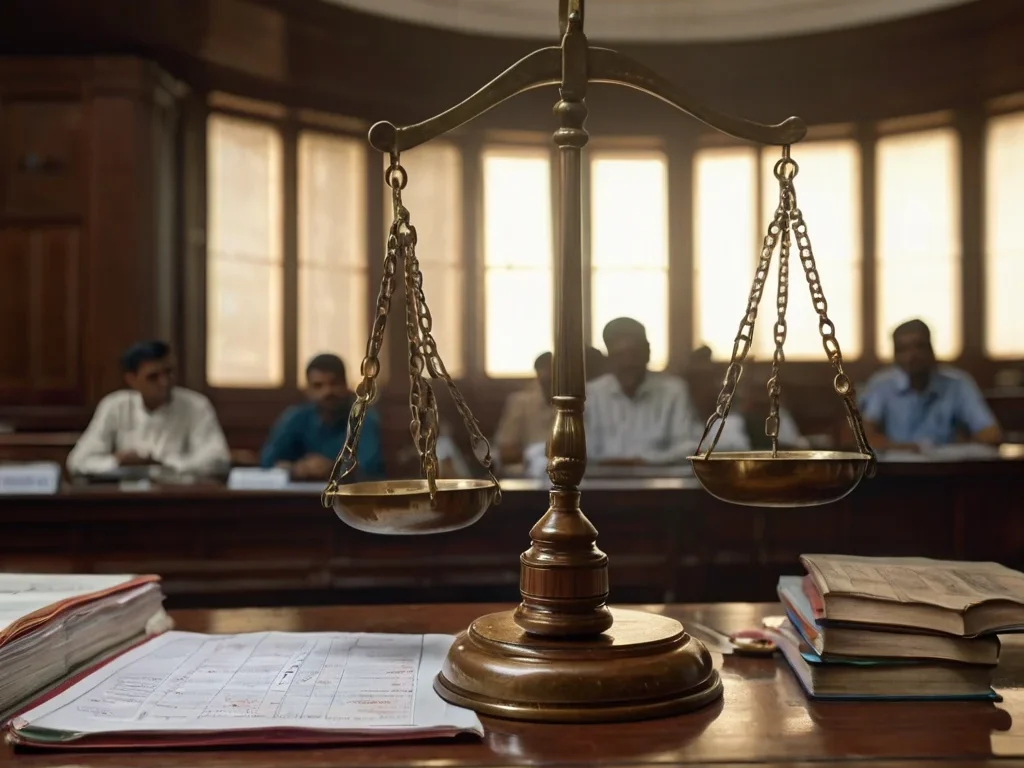For over 160 years, Indians lived below criminal laws written within the course of British colonial rule. The Indian Penal Code (IPC) of 1860, the Code of Criminal Procedure (CrPC) of 1898 (later up to date in 1973), and the Indian Evidence Act of 1872 were designed for governance in a colonial setting rather than for a loose democratic kingdom. Those laws were complicated, preceding, and frequently unfair to citizens.
In 2025, the authorities of India subsequently introduced sweeping Criminal Law Reforms 2025. These reforms changed the antique colonial codes with new regulation aimed toward simplifying tactics, modernizing justice, and protecting sufferers. The coronary heart of these reforms lies inside the New Indian Penal Codes 2025, specially the Bharatiya Nyaya Sanhita (BNS).
This newsletter explains everything you want to apprehend about the reforms in a reader-first-rate way, with actual-existence examples to expose how they have an effect on not unusual citizens.
What are the Criminal Law Reforms 2025 in India?
The Criminal Law Reforms 2025 are a landmark overhaul of the justice device. They replace the 3 colonial-generation criminal tips with 3 new law:
- Bharatiya Nyaya Sanhita (BNS) 2025 – changing the Indian Penal Code.
- Bharatiya Nagarik Suraksha Sanhita (BNSS) 2025 – replacing the Code of Criminal Procedure.
- Bharatiya Sakshya Adhiniyam (BSA) 2025 – changing the Indian Evidence Act.
The primary purpose is to ensure rapid justice, citizen-friendly approaches, and popularity of cutting-edge crimes like cyberattacks, terrorism, and mob violence.
A real-existence example
Take into account the problem of mob lynching. Inside the past decade, India witnessed numerous tragic incidents in which companies of people took the regulation into their non-public hands. Below the antique IPC, mob lynching needed to be tried as murder or culpable homicide, which regularly did not reflect the collective nature of the crime. The ultra-modern BNS makes mob lynching a separate, punishable offense, sending a robust message that such violence will not be tolerated.
What is the New Indian Penal Codes 2025 (Bharatiya Nyaya Sanhita)?

The New Indian Penal Codes 2025 center across the Bharatiya Nyaya Sanhita explained because the alternative of IPC.
The IPC served India for extra than a century, however it had many flaws: complicated language, antique crimes, and an technique centered more on shielding rulers than safeguarding citizens.
The BNS modifications that. It consists of:
- New classes of crime which includes terrorism and prepared crime.
- Simplified definitions of present crimes to make them understandable for not unusual people.
- Advanced punishments for crimes toward women and kids.
- Clearer awareness on sovereignty in area of colonial priorities like sedition.
| Aspect | Key Changes |
|---|---|
| Origin | Shift from colonial-era IPC (1860) to Indian-made law (2025). |
| Total Sections | Reduced from 511 to 356 for simplification. |
| Sedition | Replaced with offense against sovereignty, unity, and integrity of India. |
| Mob Lynching | Explicitly defined as a crime with strict punishment. |
| Terrorism | Included as a separate, clearly defined offense. |
| Crimes Against Women & Children | Stronger penalties and victim-centric approach. |
| Cybercrime | Recognized and covered under BNS. |
| Language | Simplified wording for better understanding by citizens. |
Example: Terrorism instances
In the past, terrorism-associated crimes were handled under particular acts like UAPA (Unlawful Activities Prevention Act). However IPC did no longer at once understand terrorism. The BNS consists of terrorism within its form, making it much less difficult for courts and police to deal with those instances without relying best on unique legal guidelines.
Which laws replaced IPC, CrPC, and Evidence Act in 2025?
The Changes in Indian Penal Code 2025 have been no longer made in isolation. Exceptional predominant reforms have been added:
- Bharatiya Nagarik Suraksha Sanhita (BNSS) 2025: this governs how trials take vicinity, how bail is granted, and the manner police conduct investigations.
- Bharatiya Sakshya Adhiniyam (BSA) 2025: this modernizes the guidelines of evidence, specially digital proof.
Collectively, those three form the New criminal laws in India 2025.
Example: Digital proof
Imagine a case of on-line fraud in which someone transfers cash illegally the use of hacked economic institution bills. In advance, proving digital fraud modified into complex because the Evidence Act had restrained popularity for electronic records. Underneath BSA, emails, texts, name facts, CCTV footage, or even WhatsApp messages may be formally recognized in court docket, furnished they are validated. This makes it some distance much less complex to convict cybercriminals.
What are the major Changes in Indian Penal Code 2025?

The Criminal Law Reforms 2025 delivered a large variety of adjustments. Proper here are a number of the most important ones:
- Mob lynching diagnosed as a crime with strict punishment.
- Terrorism defined and protected within the penal code.
- Sedition modified with a narrower provision focused on threats to sovereignty.
- Girls’s protection bolstered with harsher sentences for rape, stalking, and harassment.
- Time-positive investigations (typically 180 days).
- E-FIR filing added, so citizens can sign in court instances on line.
- Video trials allowed in lots of instances.
| Major Change | Key Point |
|---|---|
| Sedition Removed | Replaced with offense against sovereignty. |
| Mob Lynching | Defined as a separate crime. |
| Terrorism | Added directly into the code. |
| Women & Children Safety | Stronger punishments. |
| Cybercrime | Explicitly recognized. |
Example: Girls’s protection
Recall the 2012 Nirbhaya case, which shook the feel of proper and incorrect of the nation. One of the criticisms grow to be the slow tempo of justice and loopholes that allowed convicts to put off punishment. The ultra-modern codes emphasize speedy trials and stricter punishment for sexual violence, aiming to save you such delays in the future.
You can checkout this video for easy understanding in 60s 👇
How do the new criminal laws impact common citizens?
For ordinary Indians, the New criminal laws in India 2025 convey several blessings:
- On-line access: filing FIRs from domestic is now feasible, saving time and lowering harassment at police stations.
- Rapid justice: courts are sure thru time limits for specific cases, reducing many years-prolonged delays.
- Victim-centric technique: victims now have more rights to be heard in some unspecified time in the future of trials.
- Transparency: simplified definitions recommend that residents can apprehend what the regulation actually says.
Example: Online FIR
Photo a woman in a small city who’s confused on social media. Earlier, she could likely have avoided going to the police because of stigma or logistical boundaries. With online FIR, she can be capable of now motel a complaint digitally, ensuring her case is recorded without delay.
What is the difference between IPC and Bharatiya Nyaya Sanhita 2025?
A comparison among IPC and Bharatiya Nyaya Sanhita explained indicates clean differences:
- Language: IPC’s crook jargon has been replaced by means of simpler words in BNS.
- New offenses: mob lynching, terrorism, and organized crime are right away blanketed.
- Victim attention: IPC changed into offender-centric, at the same time as BNS guarantees the sufferer has a stronger characteristic.
- Proof: IPC had no digital popularity; BNS completely accepts digital records.
Here’s the direct comparison of IPC vs. Bharatiya Nyaya Sanhita 2025 in short:
| IPC (1860) | BNS (2025) |
|---|---|
| Colonial-era law made under British rule | Indigenous law made for independent India |
| Complex and technical language | Simplified and easy-to-understand language |
| Included sedition, often misused | Sedition removed, replaced with sovereignty-related offense |
| No clear provision for terrorism, mob lynching, cybercrime | Explicitly recognizes terrorism, mob lynching, cybercrime |
| Offender-centric approach | Victim-centric with stronger rights and protections |
| Limited scope for digital/electronic evidence | Full acceptance of digital and electronic evidence |
Example: Sedition vs. Sovereignty
Underneath IPC, sedition fees were filed even closer to activists, reporters, or university students who criticized the authorities. This led to full-size misuse. The BNS replaces sedition with a focal point on acts endangering sovereignty, team spirit, and integrity of India, decreasing the possibilities of misuse in opposition to loose speech.
When will the New Indian Penal Codes 2025 be implemented?
The New Indian Penal Codes 2025 formally came into effect in early 2025, after being passed in parliament in 2023. The authorities furnished time for:
- Schooling police officers in new procedures.
- Setting up digital systems for FIRs and evidence series.
- Coaching judges, felony experts, and residents.
Example: Transition
Much like the GST reform in 2017 took time for companies to comply, the ones laws too require transition. Police stations are being prepared with era for e-FIRs and virtual data, at the identical time as regulation faculties are updating their curriculum to encompass the trendy codes.
What are the benefits and challenges of Criminal Law Reforms 2025?

Benefits
- Faster trials imply a good deal less suffering for sufferers and accused alike.
- Clarity in legal guidelines makes them comprehensible for commonplace residents.
- Digital readiness strengthens India’s fight toward cybercrime.
- Sufferer safety guarantees justice isn’t always behind schedule or denied.
- Modern offenses diagnosed (terrorism, mob lynching, organized crime).
Challenges
- Education hole: police and judiciary need time to adapt.
- Infrastructure: now not all courts are ready for video trials.
- Consciousness: citizens want education about their rights.
- Consistency: states can also put in force reforms in another manner.
Instance: Court backlog
India has almost 5 crore pending cases throughout all courts. In spite of Changes in Indian Penal Code 2025, until there are greater judges and better infrastructure, delays may also nevertheless arise. The reforms are a leap forward, however systemic problems additionally need addressing.
Global Comparison
India is not by myself in reforming its penal codes. Many nations have up to date their criminal laws in recent years:
- Germany modernized its Strafgesetzbuch to cope with cybercrime.
- Singapore presently updated its penal code with stricter punishments for virtual fraud.
- UK continuously reforms its Criminal Justice Act to reflect new challenges.
With the aid of introducing Criminal Law Reforms 2025, India joins this global fashion of creating justice systems citizen-centric and generation-pushed.
Conclusion
The Criminal Law Reforms 2025 mark the most crucial transformation in India’s legal statistics due to the fact independence. By means of introducing the New Indian Penal Codes 2025, the authorities has modified colonial-technology felony guidelines with contemporary, sufferer-focused, and technology-prepared codes. The Changes in Indian Penal Code 2025 and related criminal pointers now apprehend crimes like mob lynching and terrorism, permit on-line FIRs, take transport of digital proof, and emphasize rapid justice.
For regular residents, those New criminal laws in India 2025 imply extra get admission to, extra safety, and extra transparency. Traumatic conditions stay in implementation, however the reforms sign a clear motive: justice ought to serve human beings, now not rulers.
India’s prison adventure has entered a brand new chapter. The fulfillment of those reforms will depend upon how properly establishments adapt, but the vision is inspiring—a justice device built no longer for colonial manipulate however for democratic empowerment.
Further Readings:
- Why Online Real Money Gaming Ban in India
- Indian Ports Bill 2025: Transforming Maritime Trade
- Jan Vishwas Bill 2.0: Complete Analysis of India’s New Reform
- Delhi’s Best New Fee Regulation Law 2025

